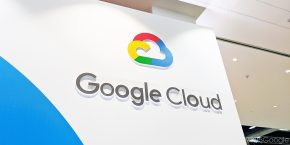
By 2030, Google wants all of its facilities to use carbon-free energy 24/7. The company is now providing a Carbon-Free Energy Percentage (CFE%) for Google Cloud regions so that enterprise customers can incorporate carbon emissions into their infrastructure decisions.
While Google already matches annual electricity consumption with 100% renewable energy, it still has to rely on fossil fuels to power data centers as local clean alternatives are not always available.
Google is listing average hourly CFE% for the majority of its Cloud regions, with lower scores reflecting “more hours in the year without a matching, local amount of carbon-free energy.” It’s meant to help chart progress and allow users to “consider the carbon impact of where they locate their applications.”
This metric is calculated for every hour and tells us what percentage of the energy we consumed during an hour that is carbon-free, based on two elements:
1. The generation feeding the grid at that time (which power plants are running)
2. Google-attributed clean energy produced onto that grid during that time.


Google explains how “maximizing the amount of carbon-free energy that supplies your application or workload will help reduce the gross carbon emissions from running on it.” It also provides customers that want to select regions based on carbon-free energy supply with the following tips:
- Pick a cleaner region for your new applications. If you are going to run an application over time, running in the region with the highest CFE% will emit the lowest carbon emissions.
- Run batch jobs on the cleanest option. Batch workloads often have the benefit of planning. You should pick the region with the highest CFE% available to you.
- Set an organizational policy for clean regions. You can restrict the location of your resources to a particular Google Cloud region or subset of regions using org policies. For example, if you want to use only US-based regions, restricting to Iowa and Oregon vs Las Vegas and S. Carolina would mean you’d be using carbon-free energy 68% more often.
FTC: We use income earning auto affiliate links. More.


Comments